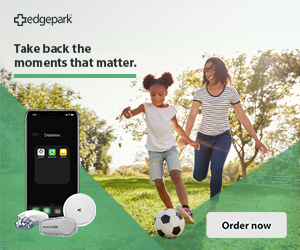Best practices around using an insulin pump and sensor
Managing type 1 diabetes (T1D) can get complicated, but incorporating an insulin pump and sensor can ease the burden of carbohydrate calculations and blood glucose monitoring. I started using an insulin pump as soon as my endocrinologist would let me, about two years after diagnosis. I loved the freedom that came with the technology and the data that could easily be downloaded at my doctor's office.
If you're considering or have recently started incorporating an insulin pump or continuous glucose monitor (CGM) into your diabetes management scheme, read on for all the top tips.
Where to wear the device
The logistics of wearing a pod or insulin pump and sensor 24/7 are usually the biggest adjustment for new users. While the placement does take a little forethought, the mechanics and preferences become simple after a short time.
Before placing a sensor, site, or pod, consider the lifetime of the device. Insulin pump sites or pods last around three days, whereas CGM sensors should stay put for 10 days or more. I try to determine how my planned activities over the next couple of weeks may impact where I want to place a site or sensor.
For instance, if I'm planning a beach vacation, I'll aim to place my sensor or site on my stomach where I know my bathing suit and swimming activities won't interfere. If I know I'll be traveling through an airport, I like to place my insulin pump sites in an easy-to-disconnect spot like my upper arm, so I can easily unhook and hand the equipment off to a TSA agent for manual inspection.
Understanding the basics and the backups
After gathering all of your supplies for a pod or insulin pump and sensor change, be sure to wash your hands thoroughly. It's important to keep your preparation surface clean as well.
If you're performing a site or pod change, double-check that your insulin is fresh and not expired. And if you're like me and prone to misplacing a CGM receiver or Omnipod Personal Diabetes Manager (PDM), consider attaching an inexpensive Bluetooth tracker to the back — it's a diabetes technology pro-tip!
There will be times when technology malfunctions, so it's critical to always have a backup method of insulin delivery and glucose testing. If a CGM sensor fails or experiences an error, reach out to the manufacturer directly (be it Dexcom, Abbott, or Medtronic) to request a replacement. I recommend storing your device manufacturer's phone number in your contact list for convenience.
Living with T1D technology
I'm a big fan of living life to the fullest even while being connected to T1D technology. If you have an active lifestyle or sweat a lot, extra adhesives may help pump sites, pods, and sensors stay firmly attached longer. The extra adhesives can also help avoid any inadvertent site removals from grabby toddler hands (from my first-hand experience).
A wide variety of diabetes device accessories are available, especially geared toward active lifestyle users. You can find everything from tactical insulin pump clips to personalized adhesives online. Special equipment belts are available to hold your insulin pump, CGM receiver, PDM, and even fast-acting glucose. I've also had luck finding workout clothes with extra pockets that fit my devices perfectly.
The best way to avoid life interruptions due to diabetes equipment is to carry a charging cord and/or extra batteries. Since our insulin pumps, PDMs, and CGM receivers are constantly in use, it can be hard to remember to charge them or replace the batteries consistently. It's frustrating to have a pump or pod full of insulin that you can't actually deliver because the electronics reached critically low battery levels. For this reason, I keep a charging cable in my car, purse, and work desk just in case.
Facing the logistics of wearing T1D management technology head-on — and always being prepared with backups and charging cords— will ensure that you get the most positive experience from these devices that exist to make our lives easier!
Interested in incorporating more diabetes management technology? Check out edgepark.com to find out how to add an insulin pump or CGM to your diabetes toolkit.




